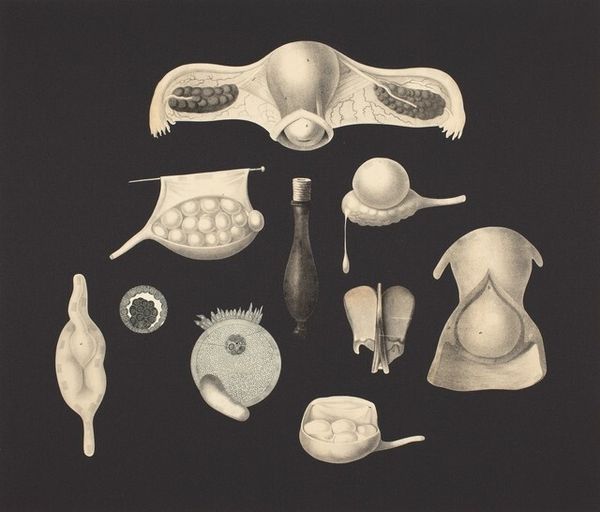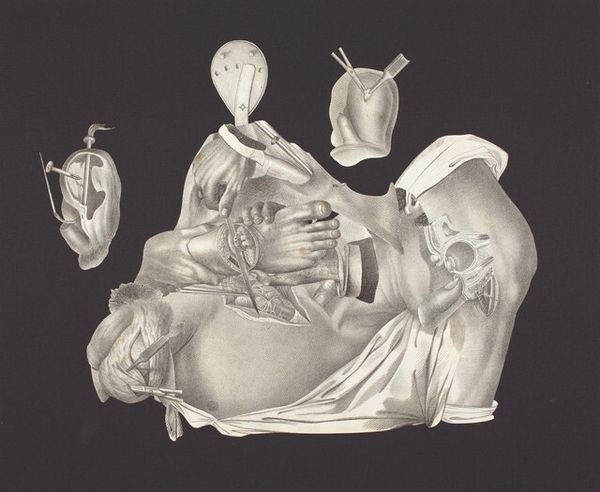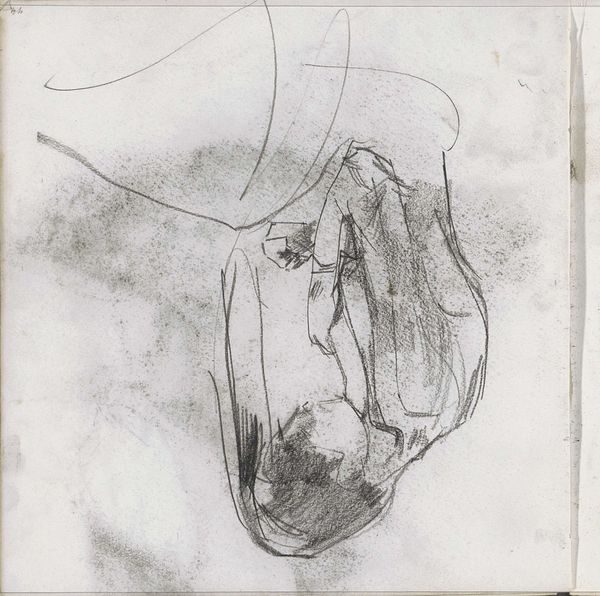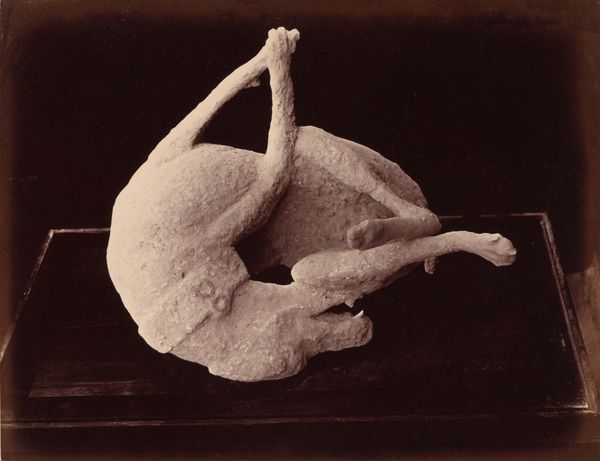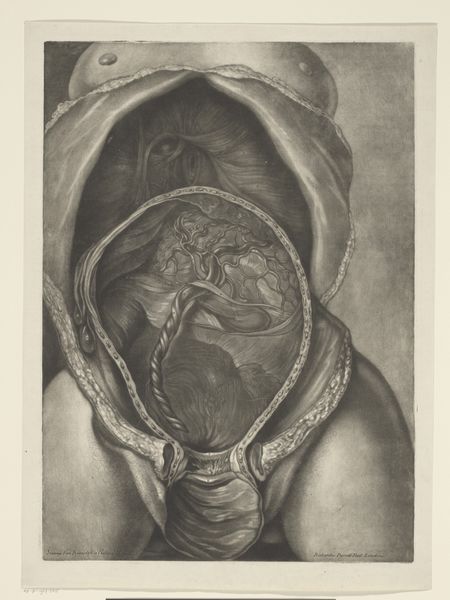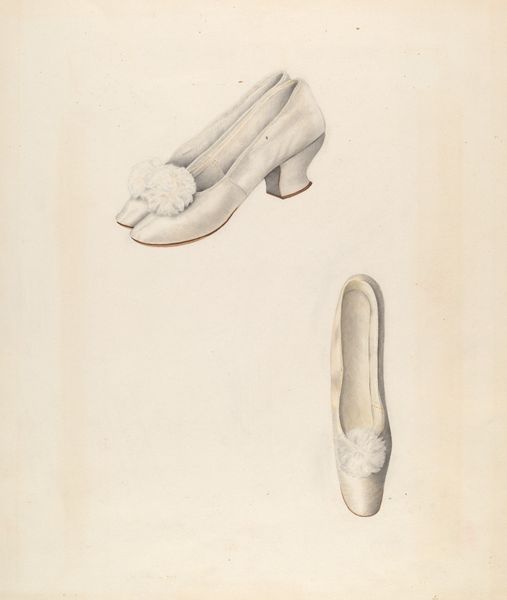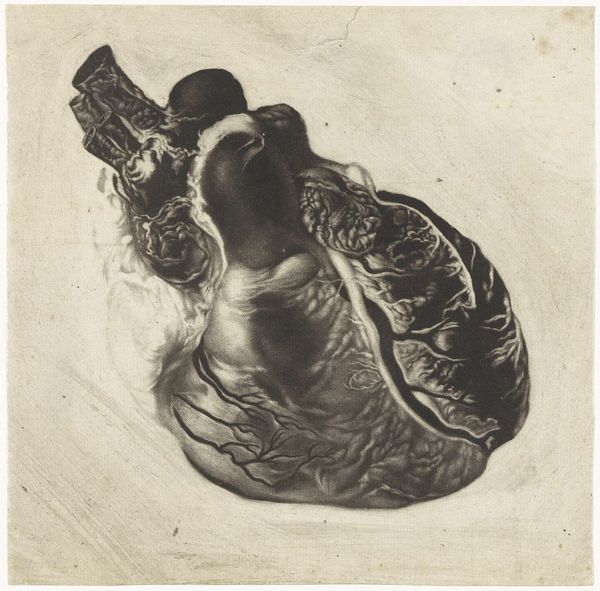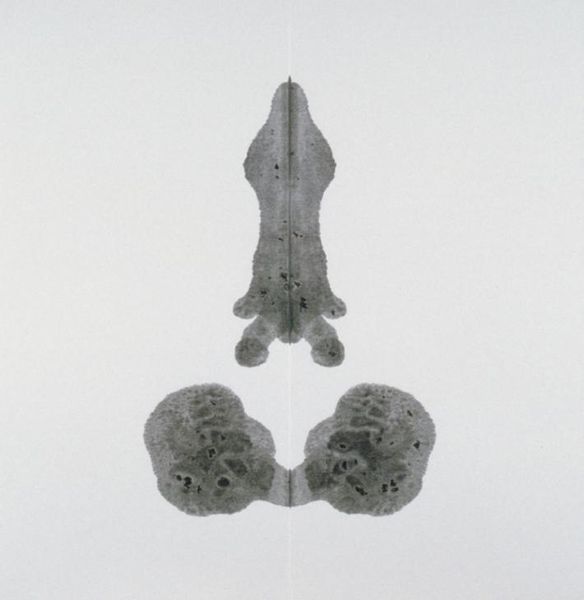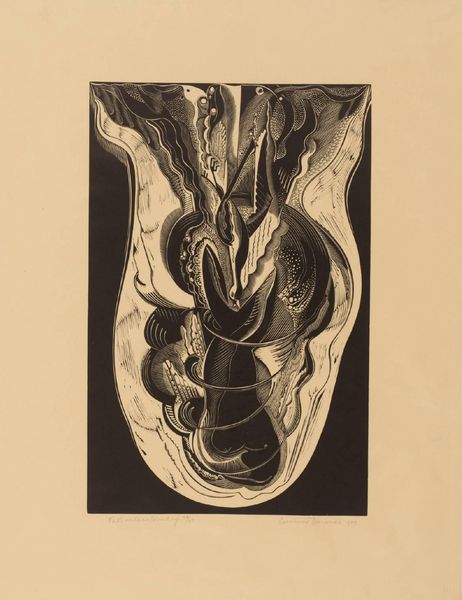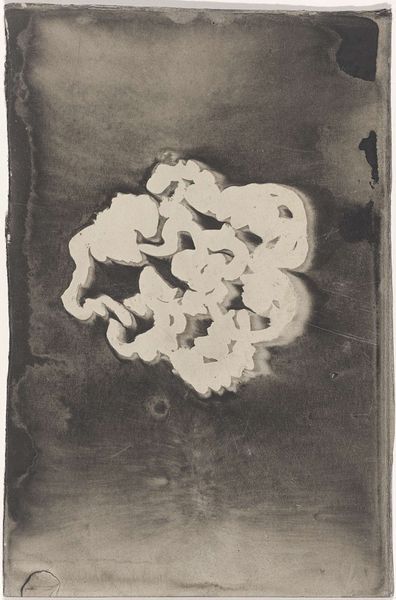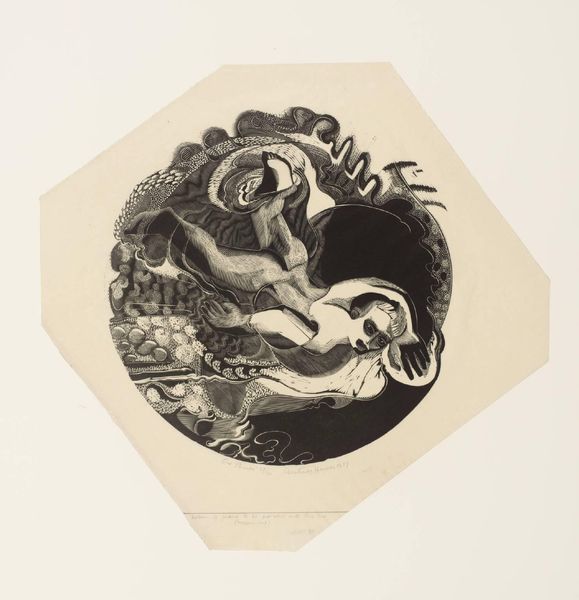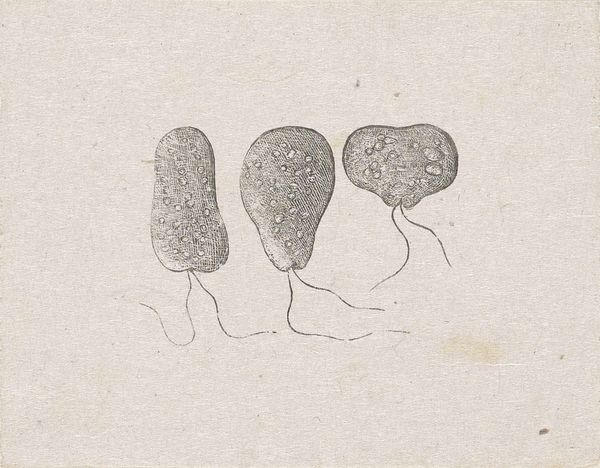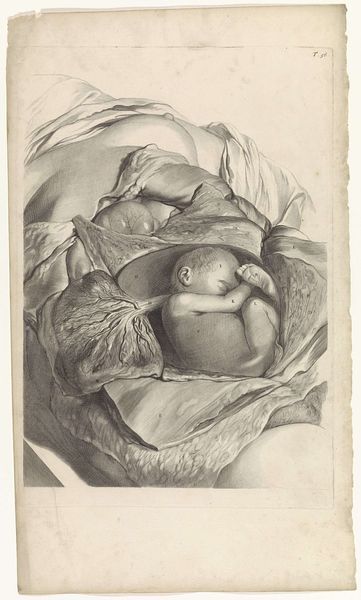
drawing, print, etching
#
drawing
# print
#
etching
#
sculpture
#
figuration
Dimensions: image: 43.1 x 46.8 cm (16 15/16 x 18 7/16 in.) support: 54.8 x 58.5 cm (21 9/16 x 23 1/16 in.)
Copyright: National Gallery of Art: CC0 1.0
Editor: Here we have Frederick Sommer's "The Miser" from 1991, a black and white etching that has an almost unsettling biological feel. It’s made up of disparate, organ-like forms that don't immediately reveal any specific meaning, it looks more like an exploded anatomical model. What do you make of it? Curator: It does have that stark, clinical quality at first glance, doesn't it? Sommer often explored the body and its fragments. For me, this isn't simply about the human form but more of an existential meditation on mortality. The "miser" perhaps hoarding these vital, yet vulnerable parts. The isolation of these forms is intriguing too. Do you see how they’re arranged, almost forming a face-like structure, but fractured and incomplete? Editor: That's a chilling but apt take. I initially saw disconnected objects but I see that resemblance now - like a fragmented, ghostly portrait! So, do you read this as being predominantly about anxieties surrounding aging and physical decay? Curator: Partly, yes. But, perhaps, anxieties of the mind too. Think of hoarding: the impulse to possess, to prevent loss… Sommer himself was deeply interested in philosophy and the unseen aspects of our existence. Perhaps it is showing us how futile these efforts ultimately are. The body and the mind can still fall into decay. But tell me, do the forms speak to you personally at all? Editor: It certainly highlights the temporary nature of the physical self. Even without decay or mortality, these are literally disparate things floating in the dark; all of us, ultimately, alone in our individual experiences. Curator: Beautifully said. Art opens these channels. I’m so glad you see what I feel. What I get from Sommer's vision helps clarify a sentiment about what is really important to our well-being, especially when facing death. Editor: Absolutely! Seeing these disconnected objects and listening to your insights helped illuminate and connect with it!
Comments
No comments
Be the first to comment and join the conversation on the ultimate creative platform.
